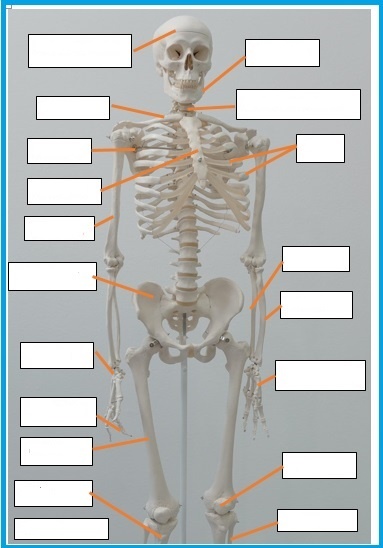First Response and Emergency Care Component 2 – Revision Notes/Questions
Q. Briefly explain the functions of the following components of the respiratory system: lung, diaphragm, intercostal muscles, parietal pleura, visceral pleura, and pleural cavity.
Q. Explain the ‘cycle of breathing’
Q. Define “elasticity” and explain the effects it has on the lungs when reduced.
Q. Define “compliance” and explain the effects it has on the lungs when reduced.
Q. Define “airway resistance” and explain the effects it has on the lungs when reduced.
Q. A man has been hit by a car and you have been called to attend to him. He seems to be unconscious. His breathing is fast and shallow and he has a weak radial pulse. Your inspection of the casualty reveals that the left side of his chest is not rising and falling equally. There is no sign of catastrophic haemorrhage, his circulation is compromised, and there is a snoring sound emanating from his airway. Suggest a treatment plan for the casualty that includes scene consideration and additional resources, assessment and management of the patient, and his transport to definitive care.
Q. Label the bones on the diagram:

Q. What are the functions of bone?
Q. What are the functions of muscle?
Q. What are the functions of tendons?
Q. What are the functions of ligaments?
Q. What are the functions of joints?
Q. What are the two main components of the central nervous system (CNS)?
Q. What are the functions of the Central Nervous System (CNS)?
Q. What are the functions of the Peripheral Nervous System (PNS)?
Q. Define sexual assault.
Q. A patient whose has experienced sexual assault may experience different signs, symptoms and issues. Name some of the signs, symptoms, and issues, categorising them as either physiological or psychological.
Q. You have been called to attend to a female patient who seems to have been sexually assaulted. Briefly discuss the considerations needed to care for the patient. In your discussion, ensure to touch on the following issues: the assessment of time critical injuries, forensic considerations, approach towards the patient, communications with the patient, patient’s wishes with regard to contacting the police, and care pathways (Sexual Assault Referral Centre).
Q. What are the roles of the following crew members when attending to a major incident: attendant, driver, first crew on scene, and first responder on scene?
Q. What is triage (focus on treatment of patients, recording of findings, and special considerations for children)?
Q. Chemical, Biological, Radiological, Nuclear and Explosive (CBRNE) incidents can have several effects. For each of the elements of CBRNE, state the routes of entry and the possible effects that should be considered.
Q. You have been called to attend to a situation in a public area that is heavily populated. A member of the public tells you that there is a rucksack that has been left unattended for an hour or so. Provide a summary of how you will initially deal with the package and how you will act when the situation is considered a terrorist incident. State what “METHANE” stands for and provide details that you would include in your “METHANE” report.
Q. Briefly describe how you would manage a patient with traumatic chest injuries with a focus on open chest wound, pneumothorax, tension pneumothorax, haemothorax, and flail chest.
Q. An explosion has occurred in an event or ceremony in which roughly 2,600 people are in attendance. As a result of the explosion that has occurred in the refreshment zone, the Senior Officer on scene has declared the situation to be a major incident. What is a major incident and what are its four stages?
Find attempted solutions to these First Response and Emergency Care – Component 2 revision questions here.


 Nationalism has been defined by Breuilly (2001) as political movements that seek or exercise state power and justify their actions based on nationalist arguments. It has also been defined by Hutchinson and Smith (1994) as an ideology based on the premise that a person’s commitment and loyalty to the nation state supersedes other personal or group interests. According to Breuilly (2001), three main assertions are ascribed to nationalism. The first claim is that a nation exists if it has a well-defined and distinctive personality. The second assumption is that the nation’s interests and values take precedence above those of the individual and organizations. The final assertion is that the nation must be as free as possible from the domination of other nations, governments, or entities.
Nationalism has been defined by Breuilly (2001) as political movements that seek or exercise state power and justify their actions based on nationalist arguments. It has also been defined by Hutchinson and Smith (1994) as an ideology based on the premise that a person’s commitment and loyalty to the nation state supersedes other personal or group interests. According to Breuilly (2001), three main assertions are ascribed to nationalism. The first claim is that a nation exists if it has a well-defined and distinctive personality. The second assumption is that the nation’s interests and values take precedence above those of the individual and organizations. The final assertion is that the nation must be as free as possible from the domination of other nations, governments, or entities. The involvement of experts in courts to provide expert testimony is not a new practice. As far back as the Middle Ages, physicians, sea captains, and other experts have been called on to help or testify in English courts when the facts of the case were so complicated that the judge or jury did not have adequate knowledge to make a decision (Essig 2002). Before the 18th century, judges and juries actively took part in gathering and presenting evidence, and experts often served as official advisors to courts or juries. When the legal system underwent the adversarial revolution in the 18th century, however, this situation changed as judges and juries took on more passive and neutral roles in the collection and presentation of evidence. Consequently, litigants took active charge of gathering and presenting evidence in a structured forensic setting (Essig 2002). This change saw the role of experts in courts change from being (impartial) court advisors or members of the jury to being partisan witnesses (Eigen 1995; Watson, 2006). In their roles as partisan witnesses, the experts faced a myriad of challenges which they sought to overcome through different means. This paper seeks to compare and contrast the challenges facing psychiatric and toxicological expertise in the nineteenth century “Adversarial Courtroom”, and the strategies they adopted to legitimate their knowledge.
The involvement of experts in courts to provide expert testimony is not a new practice. As far back as the Middle Ages, physicians, sea captains, and other experts have been called on to help or testify in English courts when the facts of the case were so complicated that the judge or jury did not have adequate knowledge to make a decision (Essig 2002). Before the 18th century, judges and juries actively took part in gathering and presenting evidence, and experts often served as official advisors to courts or juries. When the legal system underwent the adversarial revolution in the 18th century, however, this situation changed as judges and juries took on more passive and neutral roles in the collection and presentation of evidence. Consequently, litigants took active charge of gathering and presenting evidence in a structured forensic setting (Essig 2002). This change saw the role of experts in courts change from being (impartial) court advisors or members of the jury to being partisan witnesses (Eigen 1995; Watson, 2006). In their roles as partisan witnesses, the experts faced a myriad of challenges which they sought to overcome through different means. This paper seeks to compare and contrast the challenges facing psychiatric and toxicological expertise in the nineteenth century “Adversarial Courtroom”, and the strategies they adopted to legitimate their knowledge. This article attempts to answer the following questions:
This article attempts to answer the following questions:


 Solved: ‘Companies are becoming increasingly aware of the need for relation-oriented skills in their global endeavours. Female managers working for Western companies, for example, could generally be regarded as potentially effective managers in say, Asia because of their person-oriented leadership skills. The consideration women show others, as well as their ability to empathise, are features that are said to be held in high esteem in that part of the world. Why do you think that some multinationals nevertheless tend not to give serious consideration to female candidates for managerial positions in, for example, the Middle East?’ (Browaeys and Price 2015, p. 233). Critically discuss, referring to relevant research and supporting your answer with examples from international business. Companies Aware of the Need for Relation-oriented Skills: Cross-cultural management.
Solved: ‘Companies are becoming increasingly aware of the need for relation-oriented skills in their global endeavours. Female managers working for Western companies, for example, could generally be regarded as potentially effective managers in say, Asia because of their person-oriented leadership skills. The consideration women show others, as well as their ability to empathise, are features that are said to be held in high esteem in that part of the world. Why do you think that some multinationals nevertheless tend not to give serious consideration to female candidates for managerial positions in, for example, the Middle East?’ (Browaeys and Price 2015, p. 233). Critically discuss, referring to relevant research and supporting your answer with examples from international business. Companies Aware of the Need for Relation-oriented Skills: Cross-cultural management.